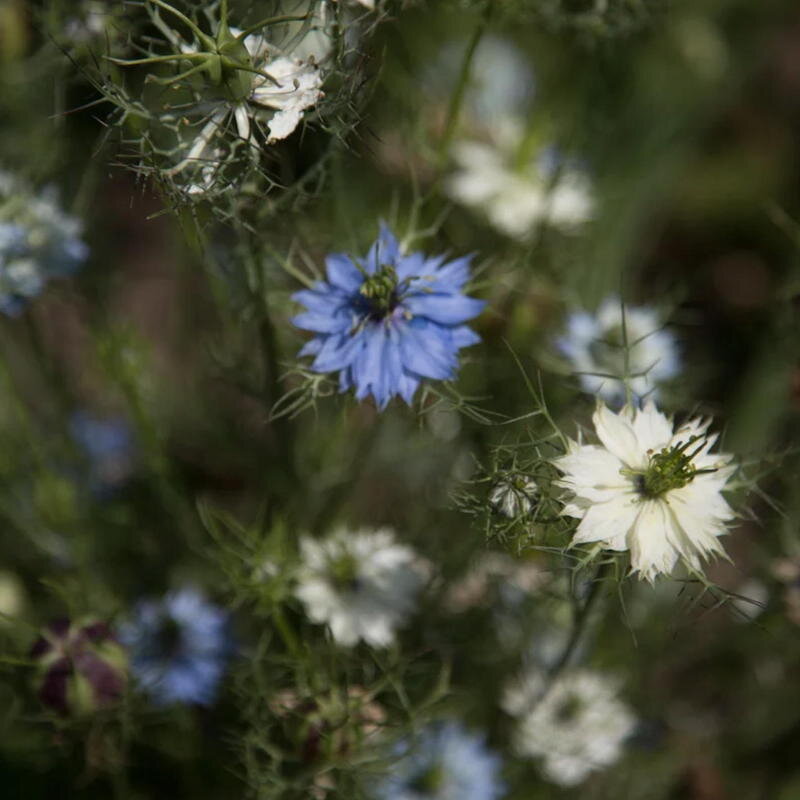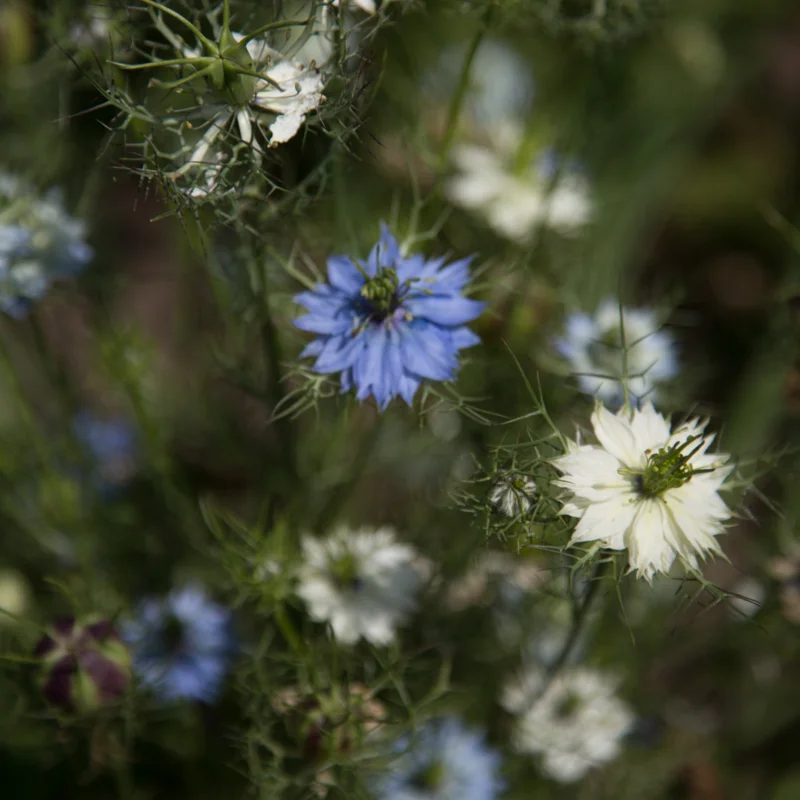Mixed Colors - Nigella
This variety offers finely cut foliage topped by an abundance of graceful flowers in shades of white, pink and blue. They produce large, highly decorative capsules, ideal for dry bouquets.
The edible seeds are used for their nutritional and medicinal properties.
These products may also be of interest to you
in the ground, on the fly, online
Sow lightly, directly in place, in well-warmed soil. Press lightly and water in light showers. When plants have 3 to 4 leaves, thin out if necessary, leaving only one plant at 30 cm in all directions. To extend the flowering period, stagger sowing.
In mild climates, autumn sowing is possible for earlier flowering.
March, April, May, June
June, July, August, September
in the ground, in pot
semi-shade, sunny
medium
all floor types
drained, reheated, rich
Nigella damascena
mid-season
200 seeds
Mixed Colours
edible
From 30 to 60 cm
cut
Eurasia
The flowers of Nigella damascena are just as edible as its seeds - which taste like nutmeg. In his book "Edible Plants of the World", published in the 19th century, Lewis Sturtevant mentions the cultivation of Nigella damascena in Turkey for its seeds, which, like those of Nigella sativa, are used as condiments. Both species have traditionally been considered extremely medicinal. In fact, a 2015 study highlighted that Nigella damascena is not a diuretic like Nigella sativa, but has more powerful antioxidant properties than Nigella sativa.










